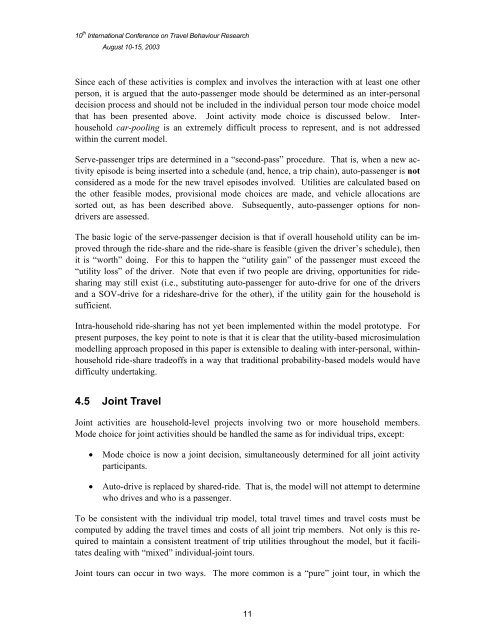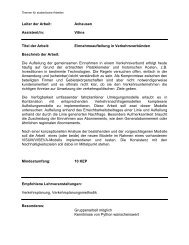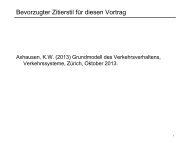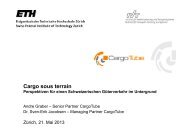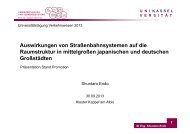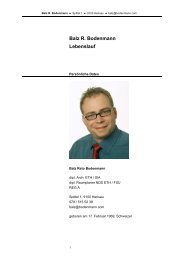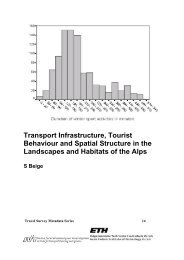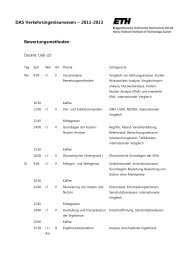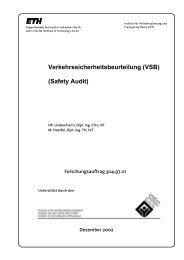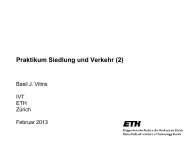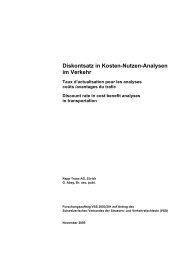A Tour-Based Model of Travel Mode Choice - Civil Engineering ...
A Tour-Based Model of Travel Mode Choice - Civil Engineering ...
A Tour-Based Model of Travel Mode Choice - Civil Engineering ...
Create successful ePaper yourself
Turn your PDF publications into a flip-book with our unique Google optimized e-Paper software.
10 th International Conference on <strong>Travel</strong> Behaviour Research<br />
August 10-15, 2003<br />
Since each <strong>of</strong> these activities is complex and involves the interaction with at least one other<br />
person, it is argued that the auto-passenger mode should be determined as an inter-personal<br />
decision process and should not be included in the individual person tour mode choice model<br />
that has been presented above. Joint activity mode choice is discussed below. Interhousehold<br />
car-pooling is an extremely difficult process to represent, and is not addressed<br />
within the current model.<br />
Serve-passenger trips are determined in a “second-pass” procedure. That is, when a new activity<br />
episode is being inserted into a schedule (and, hence, a trip chain), auto-passenger is not<br />
considered as a mode for the new travel episodes involved. Utilities are calculated based on<br />
the other feasible modes, provisional mode choices are made, and vehicle allocations are<br />
sorted out, as has been described above. Subsequently, auto-passenger options for nondrivers<br />
are assessed.<br />
The basic logic <strong>of</strong> the serve-passenger decision is that if overall household utility can be improved<br />
through the ride-share and the ride-share is feasible (given the driver’s schedule), then<br />
it is “worth” doing. For this to happen the “utility gain” <strong>of</strong> the passenger must exceed the<br />
“utility loss” <strong>of</strong> the driver. Note that even if two people are driving, opportunities for ridesharing<br />
may still exist (i.e., substituting auto-passenger for auto-drive for one <strong>of</strong> the drivers<br />
and a SOV-drive for a rideshare-drive for the other), if the utility gain for the household is<br />
sufficient.<br />
Intra-household ride-sharing has not yet been implemented within the model prototype. For<br />
present purposes, the key point to note is that it is clear that the utility-based microsimulation<br />
modelling approach proposed in this paper is extensible to dealing with inter-personal, withinhousehold<br />
ride-share trade<strong>of</strong>fs in a way that traditional probability-based models would have<br />
difficulty undertaking.<br />
4.5 Joint <strong>Travel</strong><br />
Joint activities are household-level projects involving two or more household members.<br />
<strong>Mode</strong> choice for joint activities should be handled the same as for individual trips, except:<br />
• <strong>Mode</strong> choice is now a joint decision, simultaneously determined for all joint activity<br />
participants.<br />
• Auto-drive is replaced by shared-ride. That is, the model will not attempt to determine<br />
who drives and who is a passenger.<br />
To be consistent with the individual trip model, total travel times and travel costs must be<br />
computed by adding the travel times and costs <strong>of</strong> all joint trip members. Not only is this required<br />
to maintain a consistent treatment <strong>of</strong> trip utilities throughout the model, but it facilitates<br />
dealing with “mixed” individual-joint tours.<br />
Joint tours can occur in two ways. The more common is a “pure” joint tour, in which the<br />
11


